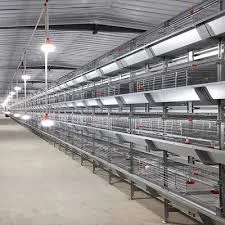poultry transport cage
Sep . 19, 2024 10:26 Back to list
poultry transport cage
The Importance of Poultry Transport Cages in the Livestock Industry
The poultry industry plays a vital role in global food production, providing a significant source of protein through meat and eggs. As the demand for poultry products continues to rise, so does the importance of efficient and humane transportation methods. One of the most essential tools in this process is the poultry transport cage, a specially designed container that facilitates the safe and effective movement of birds from farms to processing facilities and markets.
Design and Functionality
Poultry transport cages are engineered with specific features that cater to the needs of different species of birds, including chickens, turkeys, ducks, and quails. Typically made from durable, high-quality materials such as plastic or metal, these cages are designed to ensure the safety and comfort of the birds during transit. Features such as proper ventilation, easy access for feeding and watering, and robust construction help to minimize stress and injury to the poultry, which can otherwise impact their health and productivity.
The design of poultry cages also considers the logistical aspects of transportation. They are often stackable, allowing for efficient use of space during transport. This feature is particularly beneficial in reducing transportation costs and maximizing the number of birds that can be moved in a single trip. Additionally, many cages are designed to fit standard sizes used in trucks and shipping containers, further streamlining the logistics of poultry transportation.
Welfare and Regulations
Animal welfare is a critical concern in the poultry industry, and the transportation process is a significant aspect of this. Many countries have established regulations and guidelines to ensure that animals are treated humanely during transport. Properly designed poultry transport cages help meet these standards by providing a secure and comfortable environment for the birds.
poultry transport cage

In recent years, there has been an increasing emphasis on the welfare of poultry during transport. Studies have shown that overcrowding, inadequate ventilation, and prolonged transport times can lead to stress and even mortality among birds. Therefore, using well-constructed cages that adhere to animal welfare guidelines is essential for maintaining the health and well-being of poultry throughout the transport process.
Innovations in Poultry Transport Cages
The poultry industry continuously seeks innovations to improve the efficiency and humane treatment of birds during transport. Some companies are exploring the use of smart technology in their transport cages. Features such as temperature and humidity control, GPS tracking, and real-time monitoring of the birds' condition are being integrated into modern poultry transport solutions.
These innovations not only enhance animal welfare but also improve operational efficiency. By monitoring environmental conditions and the behavior of the birds, transporters can make informed decisions that reduce stress and ensure a healthier product for consumers.
Conclusion
Poultry transport cages play a crucial role in the poultry industry, balancing the needs for efficiency, safety, and animal welfare. As the industry evolves, so too will the design and technology surrounding transport cages. By investing in high-quality, innovative transport cages, poultry producers not only enhance the welfare of their birds but also contribute to the sustainability and success of the entire livestock sector. The future of poultry transportation lies in embracing these advancements while adhering to strict welfare standards, ultimately benefiting producers, consumers, and the birds themselves.
-
Automatic Feeding Line System-Pan Feeder Nipple Drinker|Anping County Yize Metal Products Co., Ltd.
NewsJul.29,2025
-
Hot Sale 24 & 18 Door Rabbit Cages - Premium Breeding Solutions
NewsJul.25,2025
-
Automatic Feeding Line System Pan Feeder Nipple Drinker - Anping County Yize Metal Products Co., Ltd.
NewsJul.21,2025
-
Automatic Feeding Line System Pan Feeder Nipple Drinker - Anping County Yize Metal Products Co., Ltd.
NewsJul.21,2025
-
Automatic Feeding Line System - Anping Yize | Precision & Nipple
NewsJul.21,2025
-
Automatic Feeding Line System - Anping Yize | Precision & Nipple
NewsJul.21,2025






